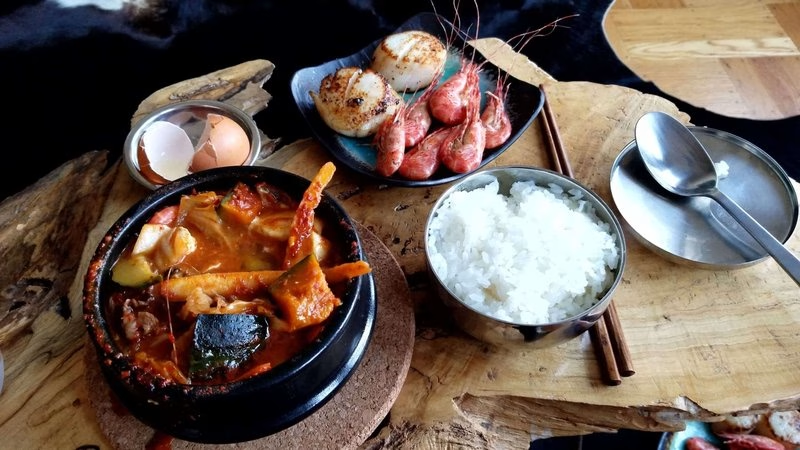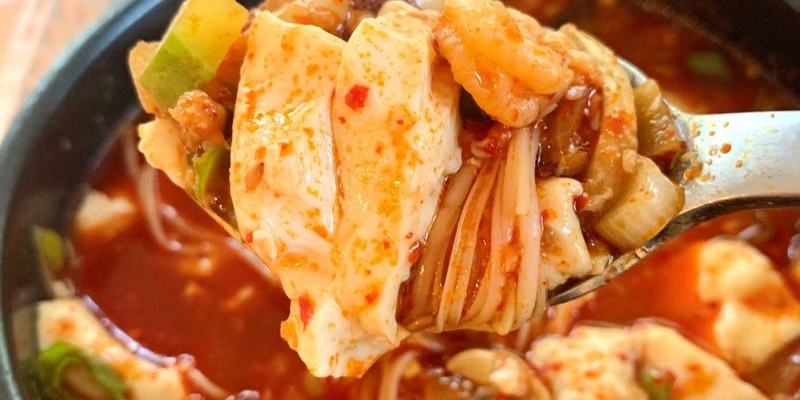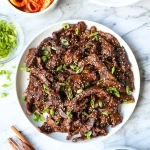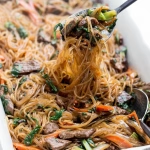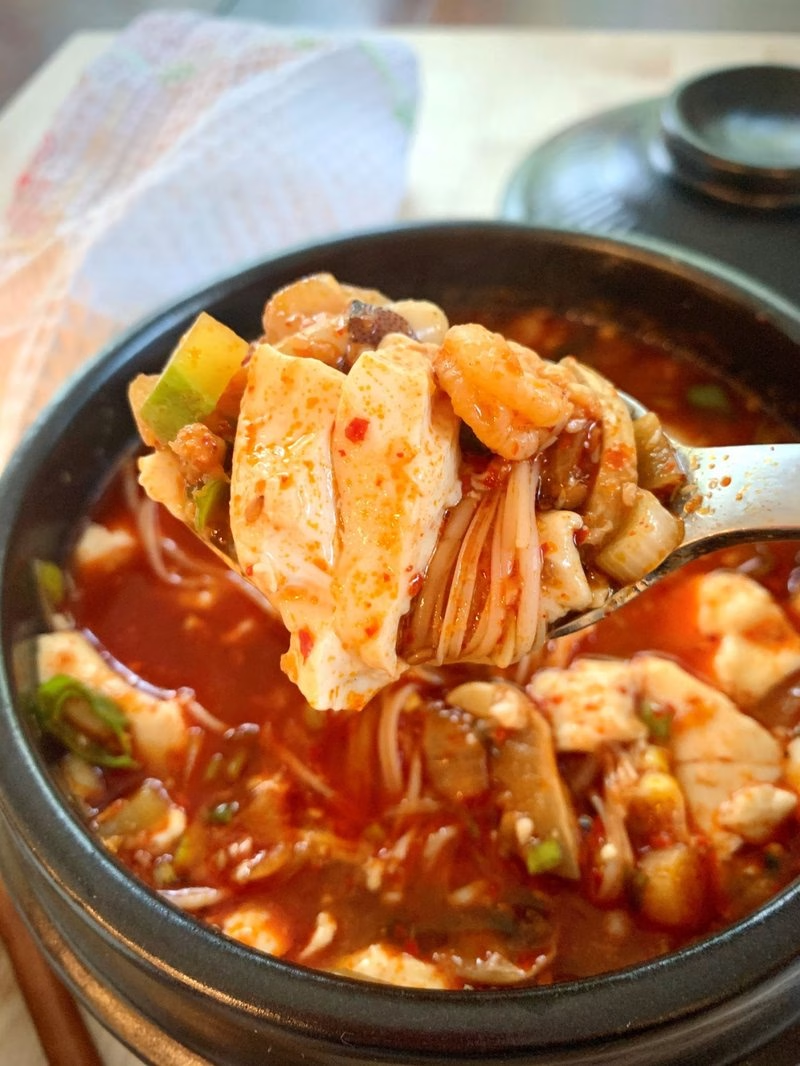
Are you ready to dive into a bowl of comfort? Haemul Dubu Jjim (Seafood Tofu Stew) is a beloved Korean dish that perfectly combines tender tofu and a medley of fresh seafood, cooked to perfection in a savory broth. This dish is not just delicious; it has a unique blend of flavors that make it a staple in Korean households, especially during colder months. From its humble beginnings in Korean cuisine to its rise in popularity globally, Haemul Dubu Jjim offers a delightful culinary experience that you can enjoy at home.
In this article, you’ll discover everything you need to know to prepare this scrumptious stew, including the essential Haemul Dubu Jjim (Seafood Tofu Stew) ingredients, variations, and a step-by-step guide on how to make Haemul Dubu Jjim right in your kitchen. Whether you’re a seasoned chef or a cooking novice, this recipe will surely impress!
Ingredients
| Ingredients | Measurements | Description |
|---|---|---|
| Soft Tofu | 1 block (14 oz) | Soft tofu adds a rich creaminess to the Haemul Dubu Jjim (Seafood Tofu Stew), absorbing all the delightful flavors. |
| Mixed Seafood | 1 cup | Using a mix of shrimp, clams, and squid brings an oceanic freshness that defines this dish. |
| Onion | 1 medium, chopped | Onions provide a sweet undertone and a depth of flavor in the stew. |
| Garlic | 4 cloves, minced | Fresh garlic enhances the aroma and depth of flavor in Haemul Dubu Jjim (Seafood Tofu Stew). |
| Scallions | 2, chopped | Scallions add a fresh, mild onion flavor that complements the seafood beautifully. |
| Gochujang (Korean Chili Paste) | 2 tablespoons | This Korean staple adds both heat and a rich umami flavor to the stew. |
| Fish Sauce | 1 tablespoon | Fish sauce gives you that authentic seafood taste, enhancing the overall flavor. |
| Water or Dashi Broth | 3 cups | This liquid base helps create a luscious broth that ties all the ingredients together. |
| Sesame Oil | 1 tablespoon | Helps to finish the dish with a nutty flavor that rounds off the broth. |
Step-by-Step Instructions
- Prepare the Ingredients: Start by chopping the onion, garlic, and scallions. Rinse and clean the mixed seafood, and cut the soft tofu into cubes. This preps everything for a smooth cooking process, ensuring your Haemul Dubu Jjim (Seafood Tofu Stew) comes together effortlessly.
- Cook the Base: Heat a tablespoon of sesame oil in a large pot over medium heat. Add the chopped onions and sauté until they’re golden brown, releasing a sweet, aromatic scent. Next, stir in the minced garlic and cook for an additional minute to infuse the oil.
- Add the Seafood: Toss in your mixed seafood to the pot. Stir-fry for about 2-3 minutes until the seafood starts to firm up and their colors become vibrant. This step is crucial for enhancing the flavor of your Haemul Dubu Jjim (Seafood Tofu Stew).
- Incorporate the Tofu: Gently add the cubed tofu and pour in the water or dashi broth. Bring the mixture to a simmer and watch as it transforms into a savory stew. Be careful not to break the tofu while stirring!
- Add the Seasonings: Stir in the gochujang and fish sauce. Let the mixture simmer for about 10-15 minutes, allowing the flavors to meld together beautifully. This is where your stew really gets its personality!
- Finish with Scallions: Before serving, add the chopped scallions for a burst of freshness. Let them simmer for about 2 minutes. Now, your Haemul Dubu Jjim (Seafood Tofu Stew) is ready to serve!
Pro Tips
- For a richer flavor, consider using homemade dashi broth instead of water. It adds an extra dimension to your stew.
- Feel free to customize your seafood selection! Scallops or mussels can add variety and richness to your stew.
- If you like it spicier, increase the amount of gochujang or add fresh chili peppers while cooking.
- For a vegetarian twist, replace the seafood with mushrooms and use vegetable broth.
- Serve Haemul Dubu Jjim with a side of steamed rice or crusty bread for a complete meal.
Nutritional Information
| Nutrient | Amount per Serving |
|---|---|
| Calories | 280 |
| Protein | 20 g |
| Carbohydrates | 15 g |
| Saturated Fats | 3 g |
| Fiber | 2 g |
| Cholesterol | 60 mg |
| Sugars | 2 g |
| Total Fats | 15 g |
FAQs
- What is the best way to store Haemul Dubu Jjim (Seafood Tofu Stew)?
- Store leftovers in an airtight container in the refrigerator for up to 3 days. Reheat gently to avoid breaking the tofu.
- Can Haemul Dubu Jjim (Seafood Tofu Stew) be made vegan or gluten-free?
- Absolutely! Replace seafood with hearty vegetables or mushrooms and use tofu and vegetable broth. Ensure your condiments are gluten-free.
- What are the best side dishes to serve with Haemul Dubu Jjim (Seafood Tofu Stew)?
- Pair it with steamed rice, kimchi, or a side salad for a balanced meal.
- How long does it take to prepare Haemul Dubu Jjim (Seafood Tofu Stew)?
- From prep to table, it takes about 40 minutes.
- Can I freeze Haemul Dubu Jjim (Seafood Tofu Stew) for later?
- Yes, you can freeze it! However, the texture of the tofu may change. Store in a freezer-safe container for up to 2 months.
- Is there a substitute for gochujang in Haemul Dubu Jjim (Seafood Tofu Stew)?
- While gochujang is key to the flavor, a combination of chili powder and a touch of sugar can mimic its sweetness and heat.
- Can I make Haemul Dubu Jjim (Seafood Tofu Stew) ahead of time?
- Yes! Making it a day in advance allows the flavors to deepen; just reheat before serving.
- What type of seafood works best in Haemul Dubu Jjim (Seafood Tofu Stew)?
- Shrimp, clams, squid, and scallops are popular choices but feel free to use your favorites!
Now you’ve unlocked the secrets of making authentic Haemul Dubu Jjim (Seafood Tofu Stew)! This hearty dish is not just a meal; it’s a flavor-packed experience that can bring warmth to any table. With its nutritious ingredients and vibrant flavors, it’s a dish worth mastering. So, roll up your sleeves and try making this delightful stew at home. You might just find it becomes a family favorite.
Tried this Haemul Dubu Jjim (Seafood Tofu Stew) recipe? Let us know your experience in the comments!
